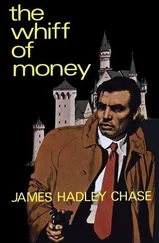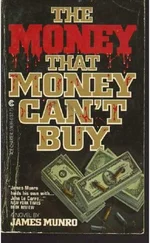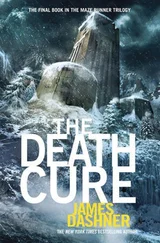While most Americans have not heard of Andy Marshall, the Chinese military have. Marshall was a leading theorist of the late twentieth-century “revolution in military affairs” or RMA, which presaged radical changes in weaponry and strategy based on massive computing power. Precision-guided munitions, cruise missiles, and drones are all part of RMA. People’s Liberation Army general Chen Zhou, the principal author of several recent Chinese strategic white papers, told The Economist , “We studied RMA exhaustively. Our great hero was Andy Marshall in the Pentagon…. We translated every word he wrote.”
Marshall is no stranger to potential confrontation with China. In fact, he is the principal architect of the main U.S. battle plan for war with China in the western Pacific. This classified plan, called “Air-Sea Battle,” involves blinding China’s surveillance capabilities and precision missiles, followed up with massive air power and naval attacks.
On this occasion, Marshall was not being briefed on kinetic weapons or air-sea tactics. He was hearing about sovereign wealth funds, stealth gold acquisition, and potential threats to national security caused by U.S. Federal Reserve policy.
China has over $3 trillion of investments denominated in U.S. dollars, and every 10 percent devaluation in the dollar engineered by the Fed represents a $300 billion real wealth transfer from China to the United States. It is not clear how long China will tolerate this raid on its accumulated wealth. If China were not able to defeat the United States in the air or on the sea, it could attack through capital markets.
The threats discussed with Andy Marshall that day were entirely consistent with Chinese military doctrine. Unrestricted warfare doctrine, including financial war and cyberwarfare, has roots as far back as 1995. That year Major General Wang Pufeng, former director of strategy at Beijing’s Military Science Academy, published a paper called “The Challenge of Information Warfare.” After paying tribute to Andy Marshall in the paper’s opening lines, Wang went on to write:
In the near future, information warfare will control the form and future of war. We recognize this developmental trend of information warfare and see it as a driving force in the modernization of China’s military and combat readiness. This trend will be highly critical to achieving victory in future wars.
The People’s Liberation Army of China made this doctrine even more explicit in a 1999 book entitled Unrestricted Warfare . Unrestricted warfare tactics include numerous ways of attacking an enemy without using kinetic weapons such as missiles, bombs, or torpedoes. Such tactics include the use of weapons of mass destruction that disperse biological, chemical, or radiological elements to cause civilian casualties, and terrorize populations. Other examples of unrestricted warfare include cyberattacks that can ground aviation, open floodgates, cause blackouts, and shut down the Internet.
Recently, financial attacks have been added to the list of asymmetric threats first articulated by Wang and others. Unrestricted Warfare spells this out in a chapter called “The War God’s Face Has Become Indistinct.” It was written not long after the 1997 Asian financial crisis, which cascaded into the global financial panic of 1998. Much of the distress in Asia was caused by Western bankers suddenly pulling hot money out of banks in emerging Asian markets; the distress was compounded by bad economic advice from the Western-dominated IMF. From an Asian perspective, the entire debacle looked like a Western plot to destabilize their economies. The instability was real enough, with riots and bloodshed from Indonesia to South Korea. The ill will escalated to the point of name-calling between Malaysian prime minister Mahathir Mohamad and hedge fund maven George Soros in an infamous confrontation at the IMF annual meeting in Hong Kong in September 1997.
The Chinese were less affected than other Asian nations by the panic, but they studied the situation and began to see how banks, working in conjunction with the IMF, could undermine civil society and possibly force regime change. One of their responses to the crisis was to accumulate massive dollar reserves so they would not be vulnerable to a sudden “run on the bank” by Western lenders. The other response was to develop a doctrine of financial war. The lessons of the 1997–98 crisis were summarized by two Chinese military leaders in a passage both poetic and prophetic:
Economic prosperity that once excited the constant admiration of the Western world changed to a depression, like the leaves of a tree that are blown away in a single night by the autumn wind…. What is more, such a defeat on the economic front precipitates a near collapse of the social and political order.
The Chinese are ahead of us: their doctrine of strategic financial warfare emerged in 1999 in response to the 1997 Asian financial shock. In comparison, U.S. thinking about financial warfare did not take recognizable shape until ten years later, in 2009, in response to an even bigger shock, the global financial panic of 2008. By 2012, both China and the United States had engaged in extensive efforts to develop strategic and tactical financial warfare doctrines. It was in this context that our group was summoned to brief Andy Marshall and his team on the emerging threat.
* * *
Financial warfare has both offensive and defensive aspects. Offense includes malicious attacks on an enemy’s financial markets designed to disrupt trading and destroy wealth. Defense involves early detection of an attack and rapid response, such as closing markets or interdicting enemy message traffic. Offense can consist of either first-strike disruption or second-strike retaliation. In game theory, offense and defense converge, since second-strike retaliation can be sufficiently destructive to deter first-strike attacks. This line of reasoning was the same doctrine Andy Marshall helped develop in nuclear-war-fighting scenarios during the Cold War in the early 1960s. The doctrine was called Mutual Assured Destruction (MAD). Now a new doctrine of Mutual Assured Financial Destruction was emerging. To Andy Marshall, financial weapons were new, but deterrence theory was not.
The distinction between offensive and defensive capabilities in financial warfare is not the only dichotomy. There is also a distinction between physical targets, such as exchange computers, and virtual targets, such as business relationships. Virtual targets involve business conduct based on trust. A seemingly honest entity can gain trust through patient, repetitive trading, then suddenly abuse that trust by flooding a trading system with malicious, manipulative orders.
Physical targets consist of a vast network of servers, switches, fiber-optic cable, and other message traffic channels, as well as the exchange premises themselves. It is not difficult for exchange engineers or enemies to see that disrupting one link in this electronic chain through sabotage or hacking can cause chaos and force a market closure, at least temporarily. More extensive attacks can shut down markets for weeks or even months, depending on the extent of the disruption.
The financial meltdown in 2008 was not an act of financial warfare, but it did demonstrate to U.S. officials the complexity and vulnerability of the global financial system. Approximately $60 trillion of wealth was destroyed from the peak in October 2007 to the trough in March 2009. If such a catastrophe could be caused by instruments as innocuous as mortgages, imagine how much more harm could be caused by malicious market manipulation orchestrated by experts who knew exactly how the system behaved.
Thanks to Marshall and others, there’s a growing awareness that a well-orchestrated cyberfinancial attack could be as disruptive as any traditional military assault.
Читать дальше











